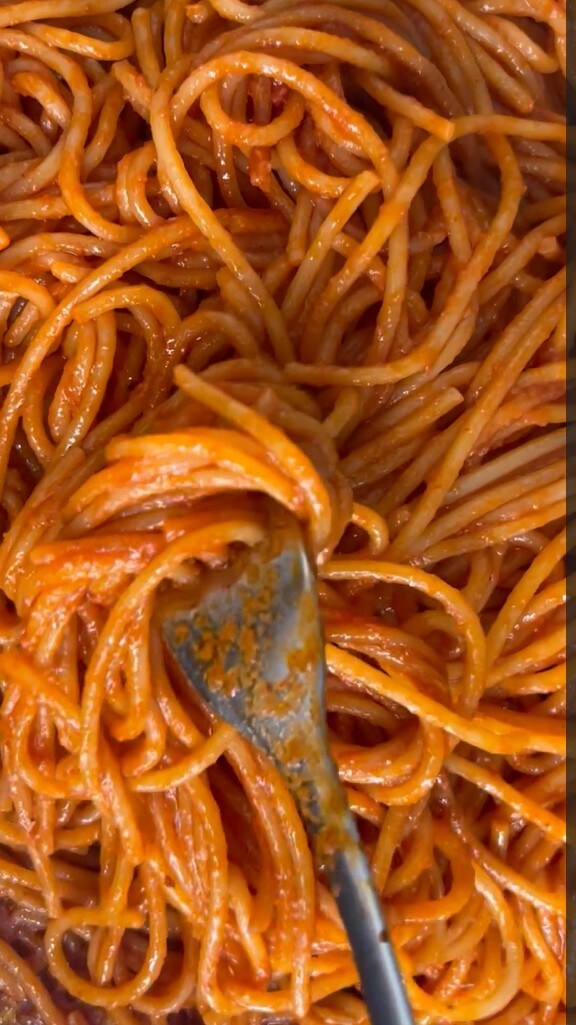Spaghetti Assassina as per Tradition … a new trend in Apulian cuisine. Today, you simply must try this dish if you happen to pass by Bari especially. Now, there’s no point in telling you the story and how this dish was born since there are many versions like all traditional dishes, and we will never know the truth, but I can assure you that it is embarrassingly good. Just like with pizza, Bari locals have established an academy for Spaghetti Assassina, and today I chose to follow the recipe according to their school of thought. I also want to try the version by its creator Enzo Francavilla who slightly boils the spaghetti until they bend, then moves them to a pan, and according to him, the spaghetti should be bronze-drawn contrary to the academy’s claim. Another difference is the tomato; he uses peeled tomatoes. Few ingredients and especially an iron pan that must be strictly treated for use. Every iron pan has its instructions. But I assure you the iron pan is essential because it cooks at high temperature, just right to make these spaghetti nearly burned and crispy. Another important thing, according to the academy, is to use non-bronze drawn spaghetti but the simple ones, but these are always schools of thought. In short, friends, you just have to try this masterpiece with very few ingredients that are especially easy to find, so good that when you make it, you’ll agree with me.
READ ALSO
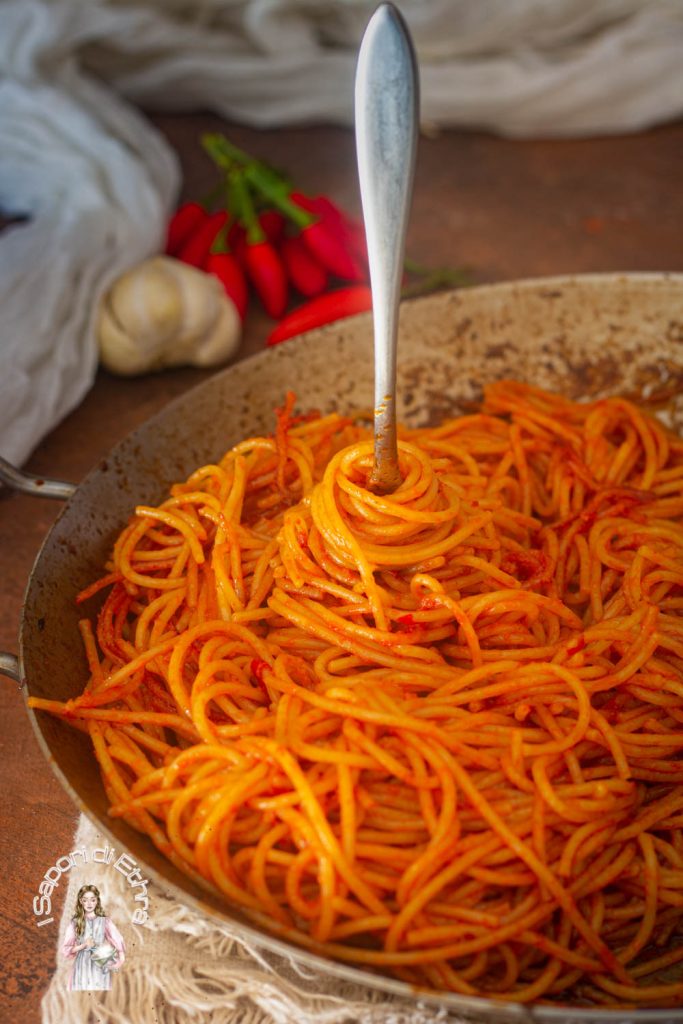
- Difficulty: Very Easy
- Cost: Very Cheap
- Preparation time: 5 Minutes
- Portions: 4
- Cooking methods: Stovetop
- Cuisine: Italian
- Seasonality: All Seasons
- Energy 292.57 (Kcal)
- Carbohydrates 38.66 (g) of which sugars 2.12 (g)
- Proteins 7.35 (g)
- Fat 12.94 (g) of which saturated 1.90 (g)of which unsaturated 0.65 (g)
- Fibers 3.39 (g)
- Sodium 357.68 (mg)
Indicative values for a portion of 200 g processed in an automated way starting from the nutritional information available on the CREA* and FoodData Central** databases. It is not food and / or nutritional advice.
* CREATES Food and Nutrition Research Center: https://www.crea.gov.it/alimenti-e-nutrizione https://www.alimentinutrizione.it ** U.S. Department of Agriculture, Agricultural Research Service. FoodData Central, 2019. https://fdc.nal.usda.gov
Ingredients
- 3 cloves garlic
- to taste hot chili pepper (I use 2)
- 14 oz spaghetti
- to taste extra virgin olive oil
- 14 oz tomato passata (San Marzano)
- 4 cups water
- 1.76 oz tomato paste
- 1 pinch salt
Tools
- 1 Pan
- 1 Knife
- 1 Pot
Steps
The first thing to do is slice and chop 1 garlic clove and leave the other two cloves whole.
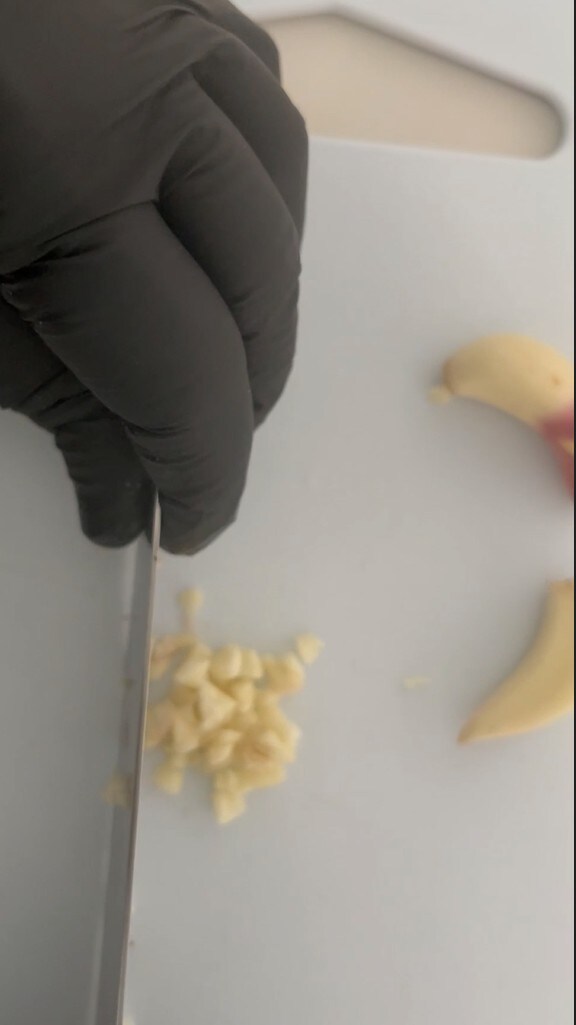
Slice the chili pepper as well. You decide the amount. I use 2 hot chili peppers.
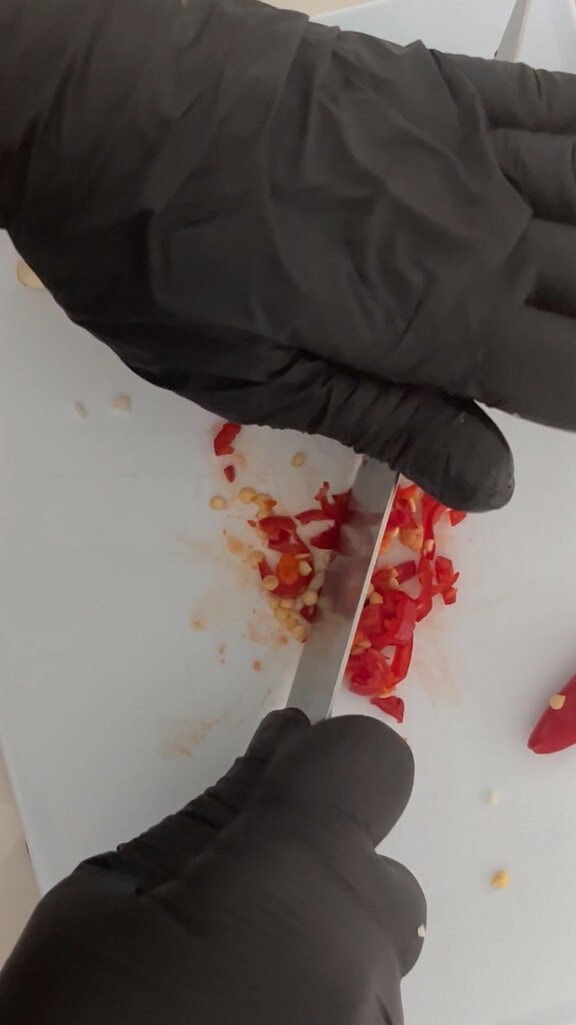
In a pot, pour the water, tomato paste, 300 g of tomato passata, and a pinch of salt, bringing it to a boil.
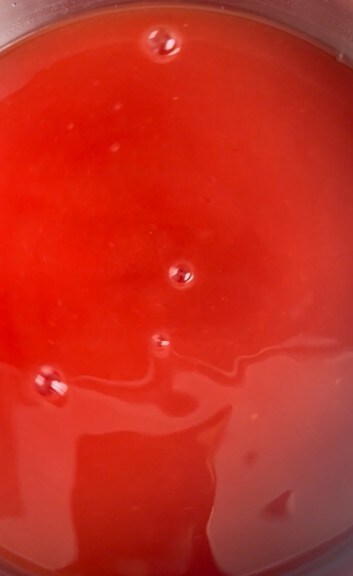
At this point, pour abundant EVO oil into the iron pan.
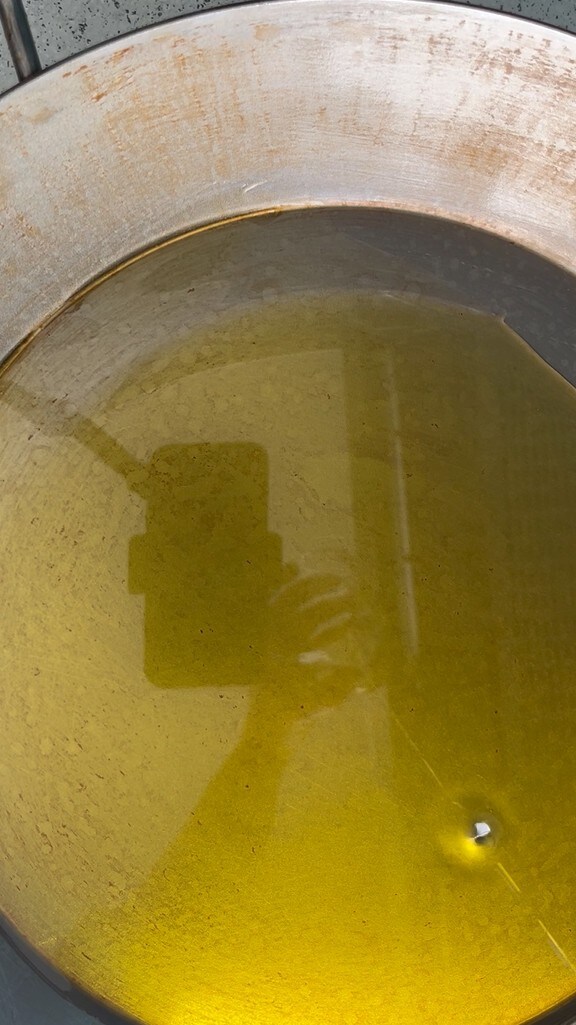
Add the garlic and chili pepper.
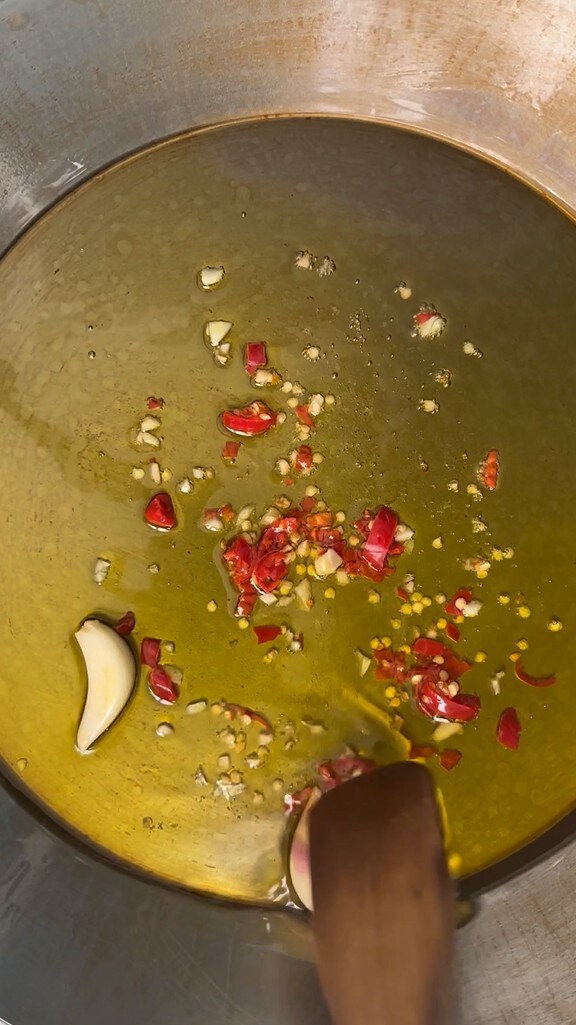
When the garlic cloves become slightly golden, pour 100 g of tomato sauce. Let the sauce reduce slightly.
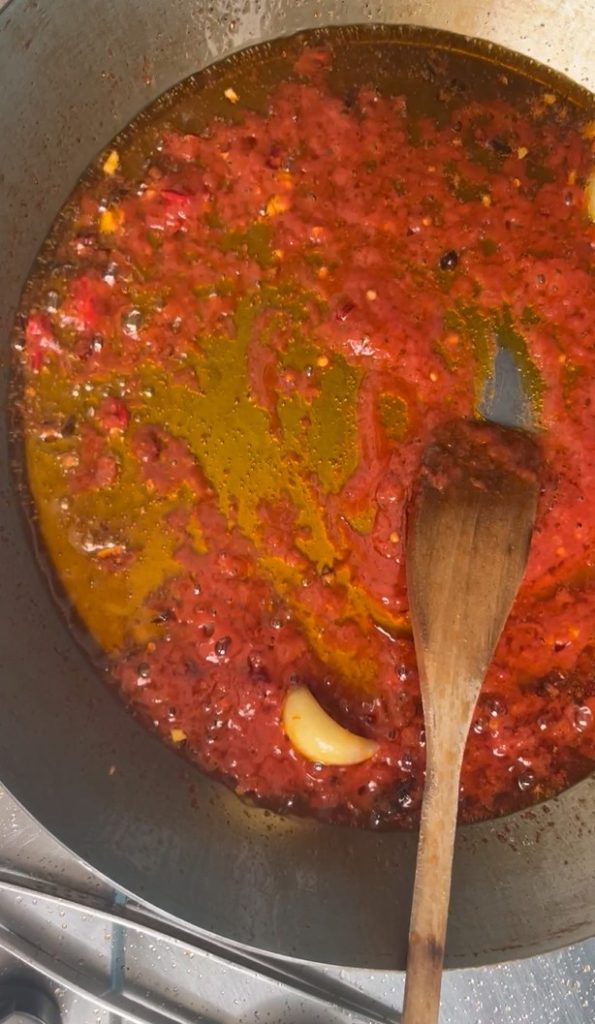
At this point, place the spaghetti whole and spread evenly (not overlapping) in the pan and let them brown well.
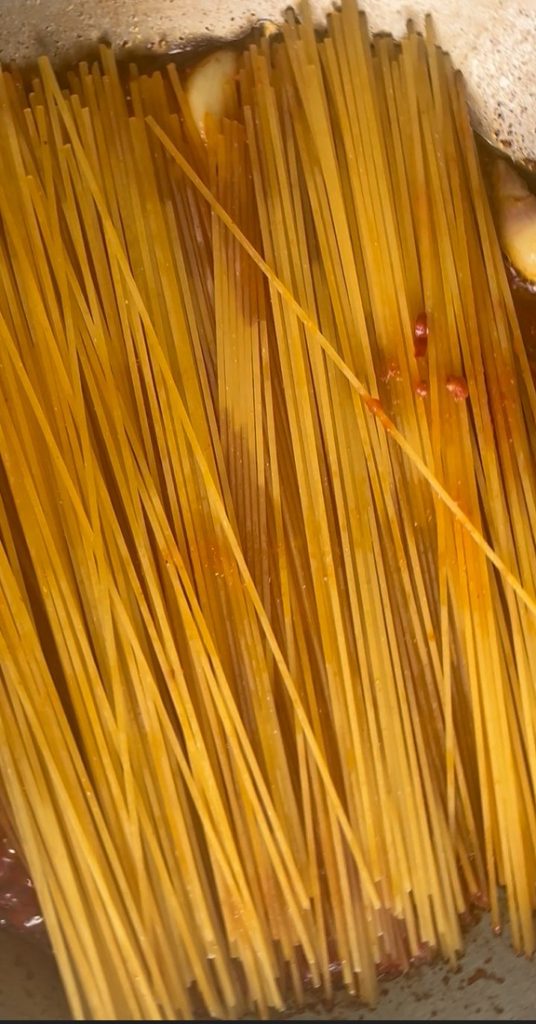
Do not rush. A crust must form. Only then, when the spaghetti starts to stick, you can gently begin to turn them over, always without overlapping them but as if they were an aligned bed of spaghetti.
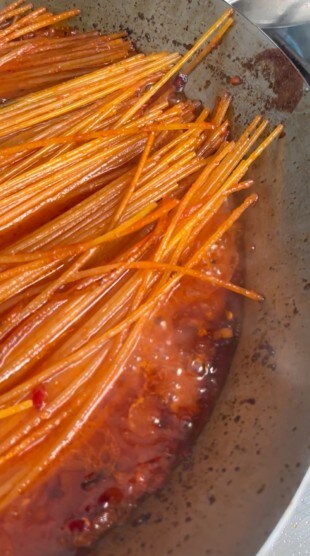
When a light crust is formed on the opposite side, start pouring two ladles of red liquid (what they call broth).
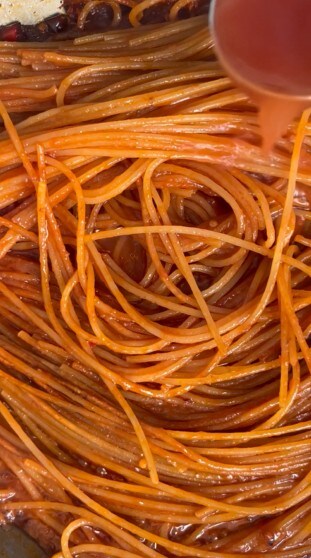
Let it reduce, and when you hear the sound of sizzling spaghetti, turn them. Pour more liquid and wait for each addition for the spaghetti to sizzle well.
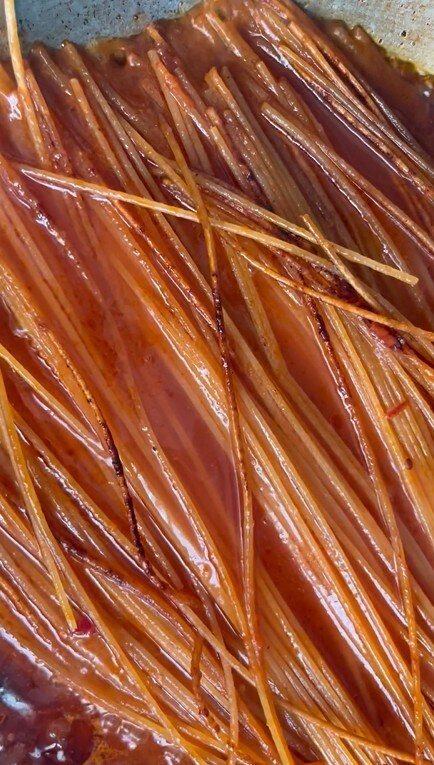
Soon, the spaghetti will start to bend.
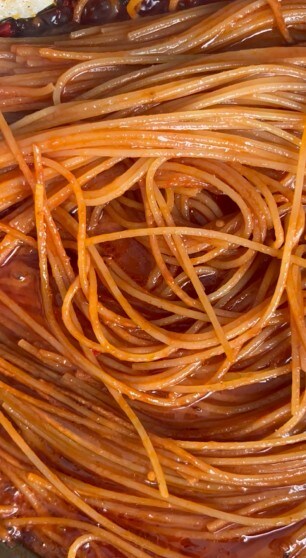
Continue adding the broth until they are cooked and a bit crispy.
